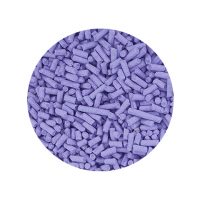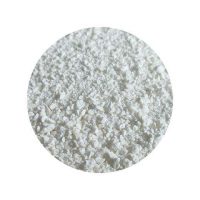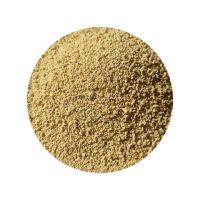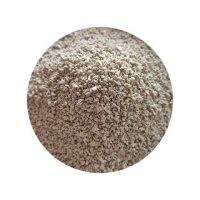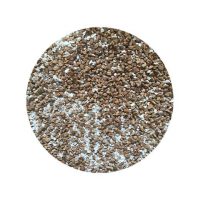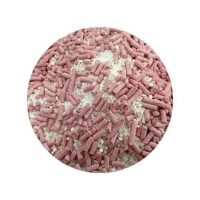In the world of feline companionship, cat litter plays an indispensable role. But a nagging question lingers in the minds of many cat owners: Can cat litter make you sick? As we cherish our furry friends and strive to maintain a healthy home environment, the potential health impacts of cat litter have become a subject of growing concern.
After all, we interact with cat litter regularly, whether scooping the litter box or simply being in the same room as our beloved pets. The dust that can arise from cat litter, the possible presence of bacteria and fungi, and the unknown chemicals in some litter all contribute to our unease. Are these concerns justified? Let’s embark on a journey to explore the relationship between cat litter and human health.
Common Types of Cat Litter
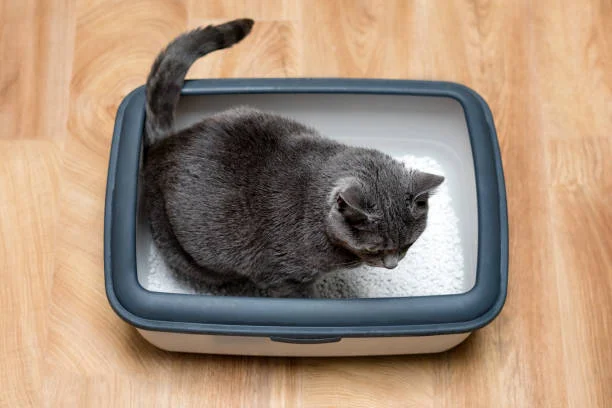
Clay Cat Litter
Clay cat litter is one of the most traditional cat litter. It is known for its excellent absorbency. It can quickly absorb urine and form clumps, making it easy to waste from the litter box. However, clay cat litter produces a lot of dust, which can be worrying for cats and cat owners. Some cats may be sensitive to dust and experience breathing problems. In addition, clay cat litter is not as environmentally friendly as some other options, as they are usually mined from the earth and their production in the environment.
Wheat Cat Litter
Wheat cat litter is a more natural and environmentally friendly alternative. It is made from wheat and has a pleasant granular texture. Wheat cat litter is also highly absorbent and can form clumps similar to clay cat litter. One of the main advantages of wheat cat litter is that they are biodegradable, which means they can be disposed of in an environmentally friendly way. However, wheat cat litter may not be suitable for households with mold allergies because they can sometimes mold if not stored properly.
Corn Cat Litter
Corn cat litter is another natural option that is becoming increasingly popular. Like wheat cat litter, corn cat litter is biodegradable and eco-friendly. They are also highly absorbent and can be effective at controlling odors. Corn cat litter is generally dust-free, making them a good choice for cats with respiratory sensitivities. However, they can be more expensive than other types of cat litter.
Crystal Cat Litter
Crystal cat litter is made from silica gel and has a unique appearance. It is composed of small crystals that can absorb moisture and odors. Crystal cat litter is very durable and needs to be replaced less frequently than other types of cat litter. However, they can cost more upfront, and some cats may not like the texture. Additionally, crystal cat litter should be used with caution as they can be a choking hazard if swallowed by pets or small children.
Can Cat Litter Make You Sick?
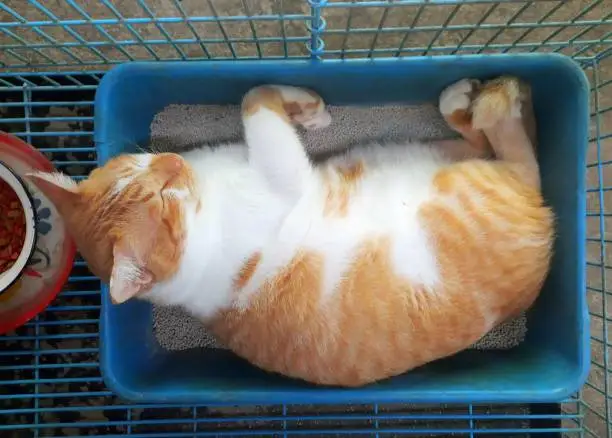
Dust Inhalation Risk
One of the main ways cat litter could potentially make you sick is through dust inhalation. Some types of cat litter, especially clay-based ones, can produce a significant amount of dust when scooped or when your cat digs around in the box. This dust can pose a serious threat to our respiratory health.
When we inhale the dust from cat litter, it can irritate the sensitive tissues of our respiratory system. The tiny particles can lodge in the nose, throat, and lungs, causing immediate symptoms such as coughing and sneezing. The dust can trigger asthma attacks, making it difficult to breathe and potentially requiring medical attention.
Long-term exposure to cat litter dust can also lead to more serious respiratory problems. It may contribute to the development of chronic obstructive pulmonary disease (COPD) or aggravate existing conditions. The constant irritation can cause inflammation in the airways, reducing their ability to function properly and increasing the risk of infections.
Bacteria and Fungi Concerns
Another significant concern when it comes to cat litter is the presence of bacteria and fungi. Cats’ waste can contain harmful microorganisms that can grow and multiply in the cat litter.
When you clean the litter box or come into contact with contaminated litter, there is a high risk of these bacteria and fungi being transferred to your skin or being inhaled. This can lead to a variety of health problems.
Skin infections are a common risk. If bacteria or fungi from the litter come into contact with the skin, they can cause rashes, itching, and inflammation. In some cases, these infections can be difficult to treat and may require the use of topical or oral medications.
Respiratory infections are also a major concern. When inhaled, the microorganisms can settle in the lungs and cause infections such as pneumonia or bronchitis. People with weakened immune systems, the elderly, and young children are particularly vulnerable to these types of infections.
Chemical Additives Dangers
Certain types of cat litter may also contain chemical additives, which can pose potential risks to human health over time.
Some litters may have fragrances or deodorizers added to mask the smell of cat waste. However, these additives can cause allergic reactions in sensitive individuals. Symptoms may include sneezing, coughing, itchy eyes, and skin rashes. In severe cases, allergic reactions can lead to anaphylaxis, a life-threatening condition.
Other chemical additives in cat litter may include antibacterial agents or preservatives. While these substances are intended to keep the litter clean and prevent the growth of bacteria, they may have unintended consequences for human health. Some antibacterial agents have been linked to the development of antibiotic-resistant bacteria, which can be difficult to treat and pose a serious threat to public health.
How to Reduce Health Risks?

Method 1: Choose Low-Dust Litters
Look for options that are specifically labeled as dust-free or have minimal dust production. This can significantly reduce the amount of dust that is released into the air when scooping or when your cat uses the litter box. Low-dust litters are often made from materials that are less likely to produce fine particles, such as certain types of natural litters like wheat, corn, or paper-based litters. By choosing a low-dust option, you can help protect your respiratory health and reduce the risk of irritation and respiratory issues.
Method 2: Keep Litter Box Clean
Another important way to minimize health risks is to keep the litter box clean. Regularly scoop out waste to prevent the build-up of feces and urine. This not only helps control odors but also reduces the growth of bacteria and fungi. Additionally, change the litter completely on a regular schedule. The frequency of litter changes will depend on factors such as the number of cats using the box and the type of litter, but as a general rule, it’s a good idea to change the litter at least once a week. By keeping the litter box clean, you can reduce the risk of exposure to harmful microorganisms and contaminants.
Method 3: Wear Protective Gear
When cleaning the litter box, it’s a good idea to wear protective gear to protect yourself from potential contaminants. Gloves can help prevent direct contact with cat waste and any bacteria or fungi that may be present. A mask can also be useful in preventing the inhalation of dust and other particles. Look for gloves and masks that are designed for protection against contaminants and are comfortable to wear. By taking these simple precautions, you can reduce your risk of exposure to harmful substances and protect your health.
Method 4: Improve Ventilation
In addition to the above methods, improving ventilation in the area where the litter box is located can also help minimize health risks. Good ventilation can help remove dust, odors, and other contaminants from the air. Consider using a fan or opening a window to increase air circulation. You can also place the litter box in a well-ventilated area, such as a laundry room or bathroom with an exhaust fan. By improving ventilation, you can create a healthier environment for both you and your cat.
Can Being in a Room With Cat Litter Make You Sick?
Friends who keep cats are very concerned about this issue. Yes, staying in a room with cat litter can make you sick. Some cat litters produce dust that can irritate the respiratory system. Bacteria and fungi in cat litter can also be inhaled or come into contact with the skin, causing infection. The chemical additives in some cat litter may cause allergic reactions, so we should try to avoid sharing a room with cat litter.
Will Cat Litter Make a Dog Sick?

As a pet owner who has both cats and dogs, you may be wondering if cat litter can make your dog sick. Well, it’s a legitimate concern. You may have noticed your dog showing some curiosity about the litter box: it does come with risks.
If your dog ingests cat litter, especially clumping cat litter, it can cause an intestinal blockage, which is a serious emergency. Additionally, cat feces in cat litter can carry parasites that could infect your dog. The dust in cat litter can irritate a dog’s respiratory system. To keep your furry friend healthy, make sure to keep the litter box out of your dog’s easy reach.
Conclusion
In conclusion, while cat litter is a necessary part of caring for our feline friends, it is important to be aware of the potential health risks it may pose. By taking proper precautions and making informed choices about the type of cat litter we use, we can minimize these risks and ensure a healthy environment for both ourselves and our beloved pets.


